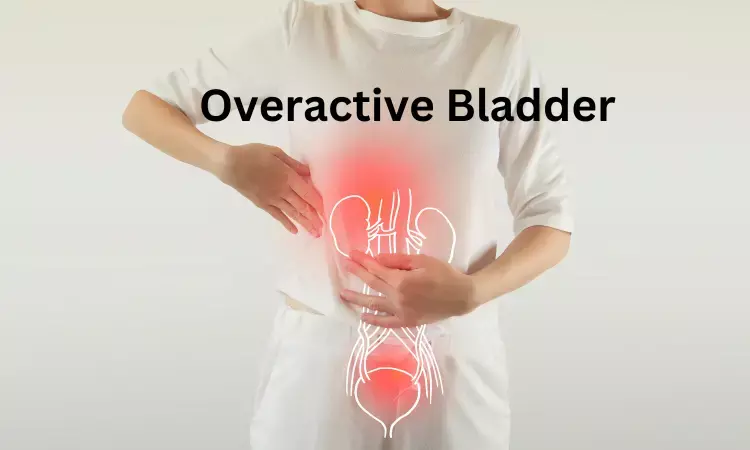- Home
- Medical news & Guidelines
- Anesthesiology
- Cardiology and CTVS
- Critical Care
- Dentistry
- Dermatology
- Diabetes and Endocrinology
- ENT
- Gastroenterology
- Medicine
- Nephrology
- Neurology
- Obstretics-Gynaecology
- Oncology
- Ophthalmology
- Orthopaedics
- Pediatrics-Neonatology
- Psychiatry
- Pulmonology
- Radiology
- Surgery
- Urology
- Laboratory Medicine
- Diet
- Nursing
- Paramedical
- Physiotherapy
- Health news
- Fact Check
- Bone Health Fact Check
- Brain Health Fact Check
- Cancer Related Fact Check
- Child Care Fact Check
- Dental and oral health fact check
- Diabetes and metabolic health fact check
- Diet and Nutrition Fact Check
- Eye and ENT Care Fact Check
- Fitness fact check
- Gut health fact check
- Heart health fact check
- Kidney health fact check
- Medical education fact check
- Men's health fact check
- Respiratory fact check
- Skin and hair care fact check
- Vaccine and Immunization fact check
- Women's health fact check
- AYUSH
- State News
- Andaman and Nicobar Islands
- Andhra Pradesh
- Arunachal Pradesh
- Assam
- Bihar
- Chandigarh
- Chattisgarh
- Dadra and Nagar Haveli
- Daman and Diu
- Delhi
- Goa
- Gujarat
- Haryana
- Himachal Pradesh
- Jammu & Kashmir
- Jharkhand
- Karnataka
- Kerala
- Ladakh
- Lakshadweep
- Madhya Pradesh
- Maharashtra
- Manipur
- Meghalaya
- Mizoram
- Nagaland
- Odisha
- Puducherry
- Punjab
- Rajasthan
- Sikkim
- Tamil Nadu
- Telangana
- Tripura
- Uttar Pradesh
- Uttrakhand
- West Bengal
- Medical Education
- Industry
Behavioral Therapy Noninferior to Drug Treatment for Overactive Bladder in Parkinson's Disease: JAMA

A new study published in the Journal of American Medical Association showed that behavioral therapy is as effective as drug therapy in managing overactive bladder (OAB) symptoms in patients with Parkinson's disease. These results support considering behavioral therapy as a first-line treatment option in clinical guidelines for urinary symptoms in PD.
The symptoms of OAB in PD might be exacerbated by the negative effects of medication. Exercise-based behavioral treatment for the pelvic floor muscles prevents drug side effects. Thus, to determine if behavioral treatment is superior than solifenacin medication therapy for OAB symptoms in people with Parkinson's disease, this study was carried out.
In 4 US Veterans Affairs health care systems, a 12-week randomized noninferiority experiment comparing behavioral treatment to solifenacin was carried out between 2018 and 2023. In addition to having a Montreal Cognitive Assessment (MOCA) score of 18 or higher (range: 0-30) and an International Consultation on Incontinence Questionnaire OAB module (ICIQ-OAB) symptom score of 7 or higher (range: 0-16; a higher score indicates worse symptoms), eligible participants were diagnosed with PD by a movement disorder neurologist. Following stratification by sex, recruitment site, severity of OAB, and severity of PD motor symptoms, participants were randomized 1:1. Analysis took place between October 2023 and April 2024.
The behavioral treatment included urge suppression techniques and training for the pelvic floor muscles. Starting at 5 mg per day, solifenacin treatment can be increased to 10 mg per day as necessary. The main result was the 12-week ICIQ-OAB score, which was within a 15% noninferiority margin for all groups. For eight weeks, adverse events were evaluated every two weeks and then again at twelve weeks.
A total of 77 individuals with Parkinson's disease (65 [84%] men; mean [SD] age, 71.3 [8.9] years; mean [SD] years with PD, 6.6 [5.8]) were randomly assigned to either behavioral therapy (n = 36) or medication therapy (n = 41). The trial was finished by 73 individuals (4 dropped out in the drug group). MOCA score (mean [SD], drug, 23.9 [3.1]; behavioral, 24.8 [3.3]) and ICIQ-OAB score (mean [SD], drug, 9.1 [1.7]; behavioral, 8.5 [1.4]) were among the baseline variables that were equal for each group.
Within the a priori noninferiority margin of 15%, ICIQ-OAB scores at 12 weeks post-randomization showed clinically meaningful improvement across groups (mean [SD] score, drug, 5.8 [2.4]; behavioral, 5.5 [2.0]; P =.02). Falls and dry mouth were reported more often in the medication group than in the behavioral group. Overall, the findings of this trial found that behavioral treatment can help PD patients with their OAB symptoms just as well as medication therapy.
Reference:
Vaughan, C. P., Morley, J. F., Lehosit, J., McGwin, G., Muirhead, L., Khakharia, A., Johnson, T. M., 2nd, Evatt, M. L., Sergent, T., Burgio, K. L., & Markland, A. D. (2025). Behavioral compared with drug therapy for overactive bladder symptoms in Parkinson disease: A randomized noninferiority trial: A randomized noninferiority trial. JAMA Neurology. https://doi.org/10.1001/jamaneurol.2025.1904
Neuroscience Masters graduate
Jacinthlyn Sylvia, a Neuroscience Master's graduate from Chennai has worked extensively in deciphering the neurobiology of cognition and motor control in aging. She also has spread-out exposure to Neurosurgery from her Bachelor’s. She is currently involved in active Neuro-Oncology research. She is an upcoming neuroscientist with a fiery passion for writing. Her news cover at Medical Dialogues feature recent discoveries and updates from the healthcare and biomedical research fields. She can be reached at editorial@medicaldialogues.in
Dr Kamal Kant Kohli-MBBS, DTCD- a chest specialist with more than 30 years of practice and a flair for writing clinical articles, Dr Kamal Kant Kohli joined Medical Dialogues as a Chief Editor of Medical News. Besides writing articles, as an editor, he proofreads and verifies all the medical content published on Medical Dialogues including those coming from journals, studies,medical conferences,guidelines etc. Email: drkohli@medicaldialogues.in. Contact no. 011-43720751


